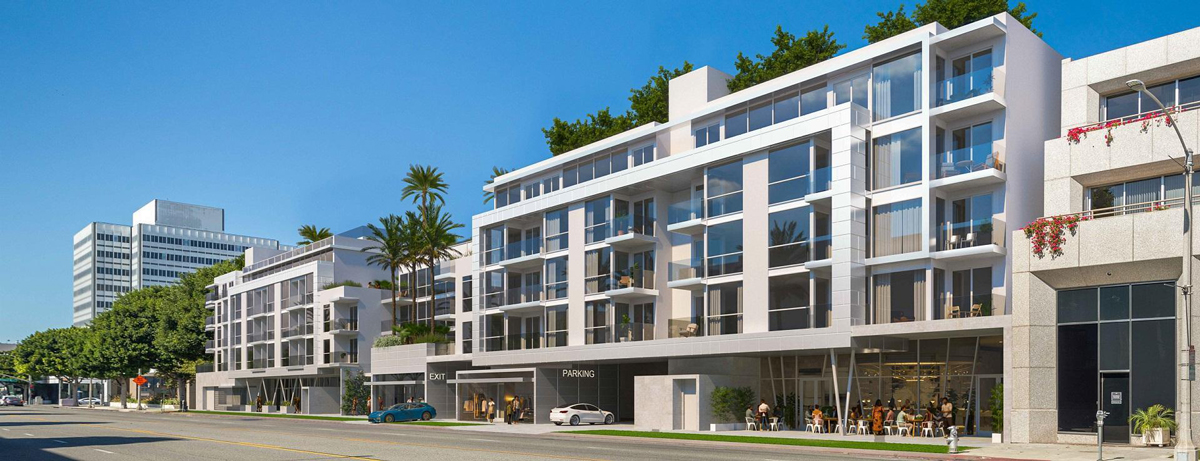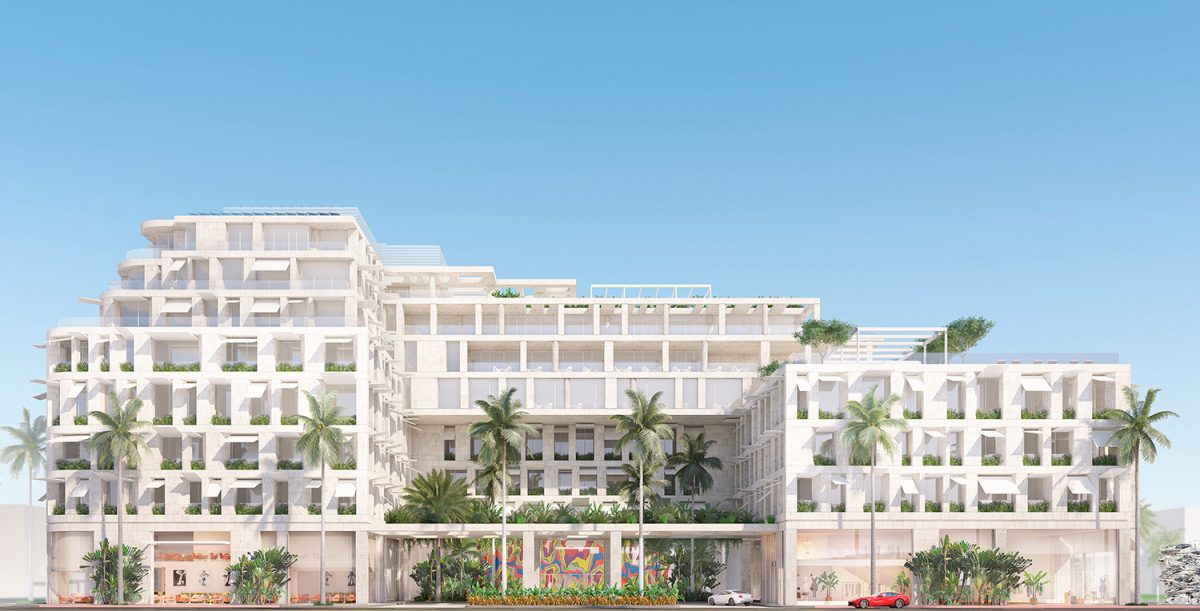Two and a half years since adopting a mixed-use ordinance, the Beverly Hills City Council is considering expanding it to encourage more residential development in commercial areas.
During its July 18 meeting, the council heard a staff report about the ordinance’s impact as well as suggestions for revising it to encourage more projects, given the fact that only one new mixed-use development has been approved thus far.
The consensus was a desire for more mixed-use development, with the council directing the Planning Commission to begin working on an updated ordinance.
“The current ordinance has in no way provided a negative impact to our city and it hasn’t, in my view, provided enough of a positive impact,” said Councilmember Lili Bosse. “I feel there is room for expansion and I very much support mixed-use in our city.”
The current ordinance was enacted in November 2020 to allow for mixed-use development–such as residential units located above businesses, in areas previously zoned for commercial uses only.
The ordinance’s goal is to increase housing availability, preserve the vitality of existing commercial corridors, encourage vibrant walkable neighborhoods and minimize tenant displacement. It applies to most commercially zoned areas except for the Business Triangle, as the council previously expressed a desire to preserve this area for business purposes exclusively.
The ordinance was controversial when first considered as both residents and council members feared that it would cause a boom in development, traffic and density.
Those fears have not come to fruition. Only one new mixed-use development has been approved since the ordinance was enacted, while three others are in the approval process.
The approved project is a residential and retail complex located at 55 N. La Cienega Blvd., the current site of the Stinking Rose restaurant. It will feature 94 market-rate apartment units, 11 low-income units and a three-level subterranean parking lot.
If approved, the three additional developments would all include a mix of retail space, market rate units and affordable units. However, they would be significantly smaller than the Stinking Rose project with 56 units proposed at 9229 Wilshire Blvd., 42 units at 8811 Wilshire Blvd. and 26 units at 8800 Burton Way.
In light of the limited impact of the ordinance as well as new pressures from the state to build more housing, council is now considering several ways to expand the ordinance.
Options on the table include extending the ordinance to more areas of the city such as the Business Triangle, increasing the allowable height and density of projects and establishing incentives such as an expedited city review process.
“Initially, there was significant apprehension and concerns regarding the introduction of the mixed-use overlay zone and it’s become apparent that the current system in place is hardly utilized,” said Councilmember Sharona Nazarian. “The situation becomes even more complex as we face a state mandate that compels us to account for 3,100 units in order to meet our RHNA numbers.”
RHNA, which stands for Regional Housing Needs Allocation, represents the number of additional housing units that the state wants built by 2029. Beverly Hills, like all other cities in the state, has been given a RHNA and is required to submit a Housing Element plan demonstrating how it will create capacity for those new units through zoning changes.
Thus far, Beverly Hills has been unsuccessful in obtaining state approval for its Housing Element. As a result, the city now stands at risk of losing local control over development and being forced to approve projects submitted through the “Builder’s Remedy” process.
“If we want to retain our autonomy as a sovereign city, we must remain mindful of the broader context including the housing shortage and the mandates imposed upon us by state leaders,” said Nazarian. “If we do not actively work on finding solutions to these challenges, developers will try to utilize Builder’s Remedy.
City Attorney Laurence Wiener, however, anticipates that the city’s Housing Element will receive approval soon. Therefore, he cautioned council members against weighing worries about Builder’s Remedy too heavily into their discussions on mixed-use.
Regardless of the threat of Builder’s Remedy, the council remains interested in encouraging more mixed-use developments.
“I think part of what we love about our community is the walkability and the sense of community,” said Bosse. “I feel that having mixed-use in our city is appropriate for our community and I think it does create what we need, which is more housing.”
Councilmember John Mirisch said he supports expanding the ordinance, but also wants to see increased developers’ fees and new strategies for incentivizing affordable housing included in the revision.
“The (developers) fees were arrived at during a time when the kind of growth that the state is forcing upon us was never envisioned and the impact upon the community—not only for physically enhanced infrastructure, but for more police, fire, and school services—had not been adequately considered,” said Mirisch.
“I think our fees need to reflect this,” he added.
City staff will now begin working closely with the Planning Commission to shape a revised ordinance based on the council’s feedback, commissioners’ thoughts and input from the public. Once a new ordinance is approved by the Planning Commission, it will proceed to the City Council for a final vote.







